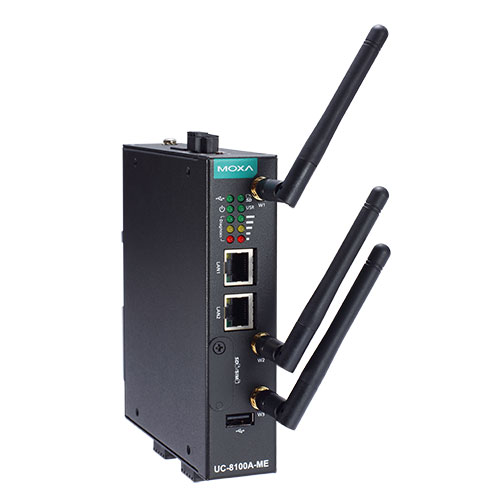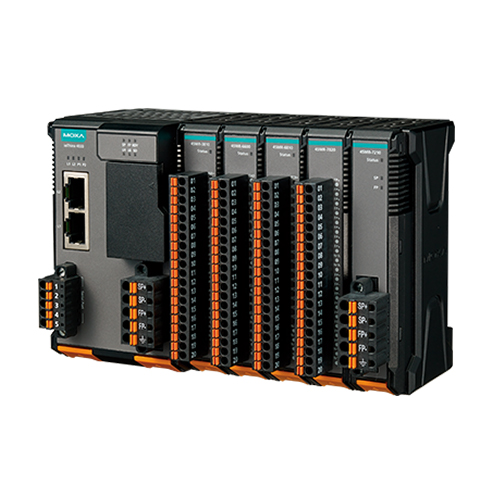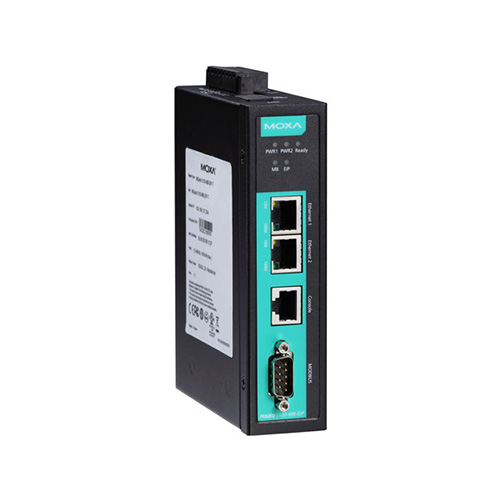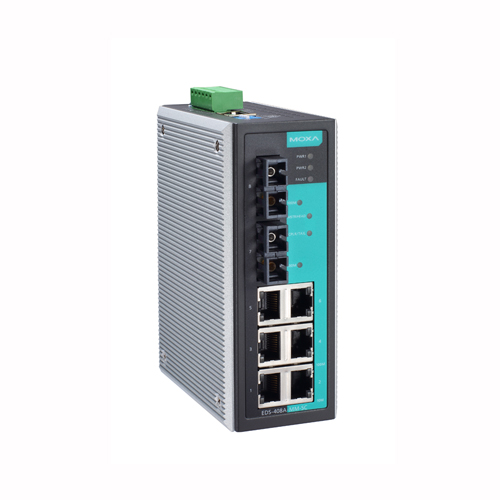An IIoT-based system helps power plant operators to monitor the intermittent renewable energy sources, such as solar and wind power, and ensure that they can be used to meet customer’s needs by improving overall efficiency. In the different power-generation models discussed below, most of the operations take place far away from the control and monitoring center in remote locations. Using traditional, centralized, or cloud-based solution does not completely address the needs in most of these cases. A highly available edge computing and connectivity solution is required to ensure that critical data and services are available at all times.
Simplifying IIoT Connectivity in Renewable Energy
What If Diverse Data Miles Away Were Easier to Acquire?
- Solar Power Plants
- Residential Solar Power
- Virtual Power Plants
A utility-scale solar power plant can consist of hundreds to thousands of solar photovoltaic panels (PVs). A solution consisting of an IIoT edge gateway and remote I/Os can be used to securely acquire data from various edge devices, such as PVs, located in remote and harsh environments. Solar farm operators can instantly access huge volumes of data from inverters and weather monitoring devices, and use AI technology to accurately forecast the amount of power that is required from renewable energy resources to be able to sufficiently meet the energy requirements of consumers.
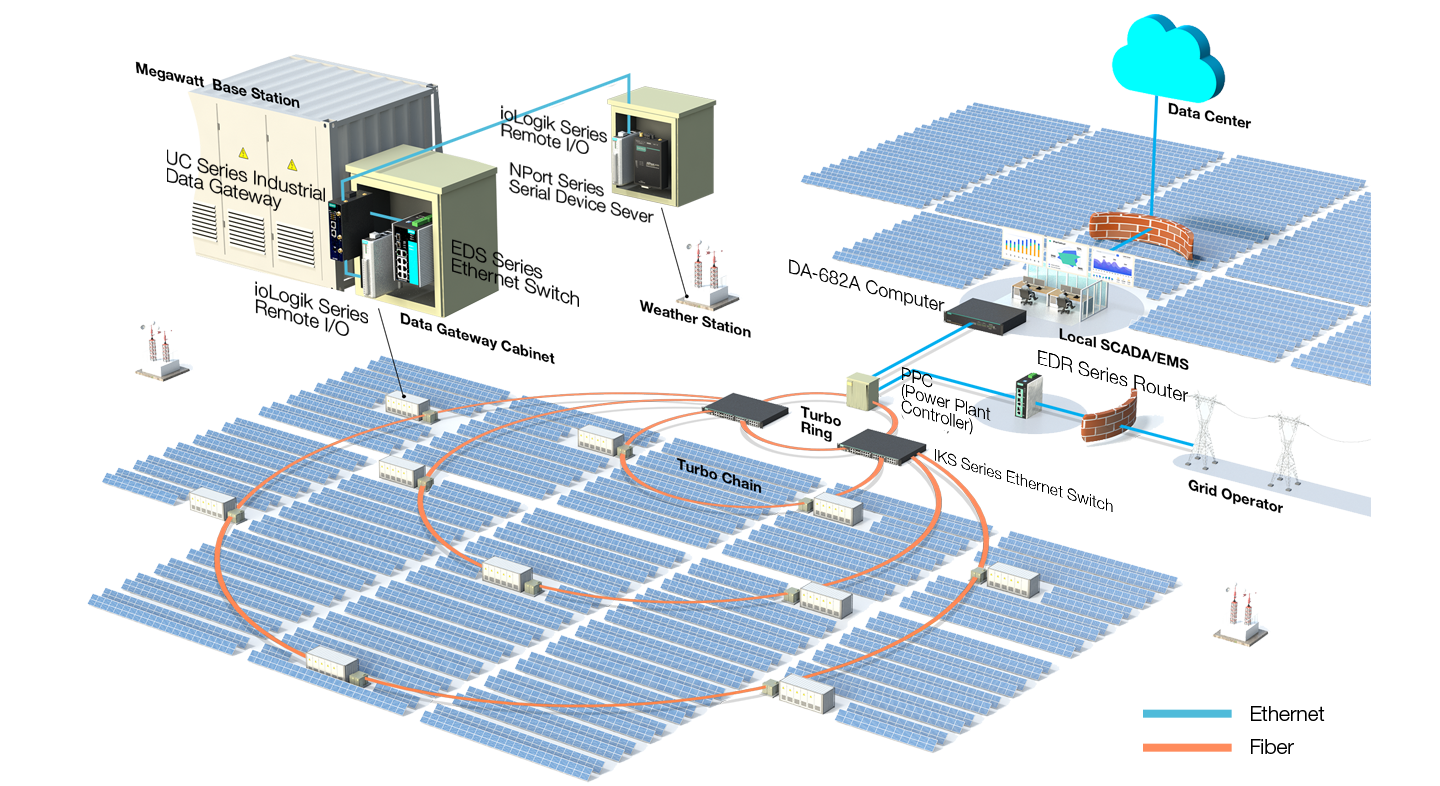
A community of solar energy “prosumers” (consumers and producers of a product) can use the infrastructure provided by a grid to trade excess energy with each other or sell excess energy back to the grid. A solar panel manufacturer could be part of this arrangement such that the manufacturer installs solar panels free of cost in each household and in return the householders agree to buy the solar energy generated for a nominal price. An intelligent IIoT gateway, with easy and reliable wireless connection, is critical to ensure data integrity of energy-usage and billing data.

In the new power economy, virtual power plants (VPPs) are showing the way by making it possible to aggregate power from different distributed energy sources (DERs) and providing an efficient platform for energy trading. To provide VPP services to the transmission grid, aggregators now draw on a diverse mix of distributed energy resources—storage, demand response, renewables, microgrids—from various commercial and residential sources. However, deploying the devices and technologies that are required by VPPs is an uphill task. Download the following white paper to learn more.
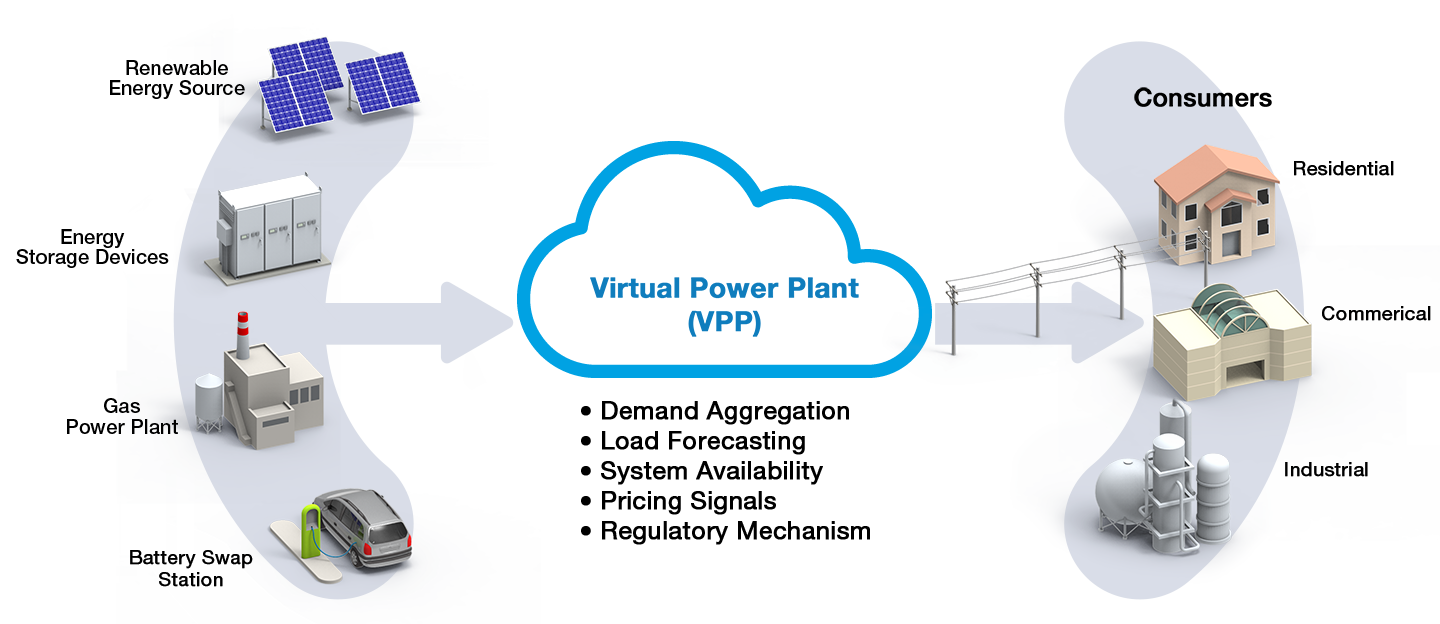
Strengthening Reliability with Trusted IIoT Connectivity
Moxa’s IIoT connectivity solutions, which include IIoT edge gateways, I/Os, and Ethernet switches, ensure stable and reliable connectivity so that data gathered from the connected networks of sensors and devices can be regularly transmitted to cloud applications for analysis even in unfavorable outdoor environments.
-

Fast and Easy
IT/OT BridgeEfficiency of existing assets is a key concern in the renewable energy sector. Moxa’s ThingsPro Gateway software on the UC series IIoT edge gateway enables data acquisition through a Modbus agent and Modbus-to-MQTT conversion for IT friendly data uploads to cloud applications.
-

High Reliability in
Harsh EnvironmentMoxa has a long track record of investing in research and development of high-quality materials and using sophisticated manufacturing techniques to build rugged networking and computing devices. The devices are designed for higher MTBF performance, low power consumption, and with capability to operate in the temperature range -40 to 75°C.
-

Guaranteed
Data IntegrityMoxa’s IIoT edge gateways feature a failover mechanism to switch between Wi-Fi and cellular connectivity to ensure high availability of communication networks. The store-and-forward function ensures that the field data reaches its destination in an efficient manner and without errors. For wired networks, the Turbo Ring technology can be used in the network backbone to provide recovery times under 20 ms.
